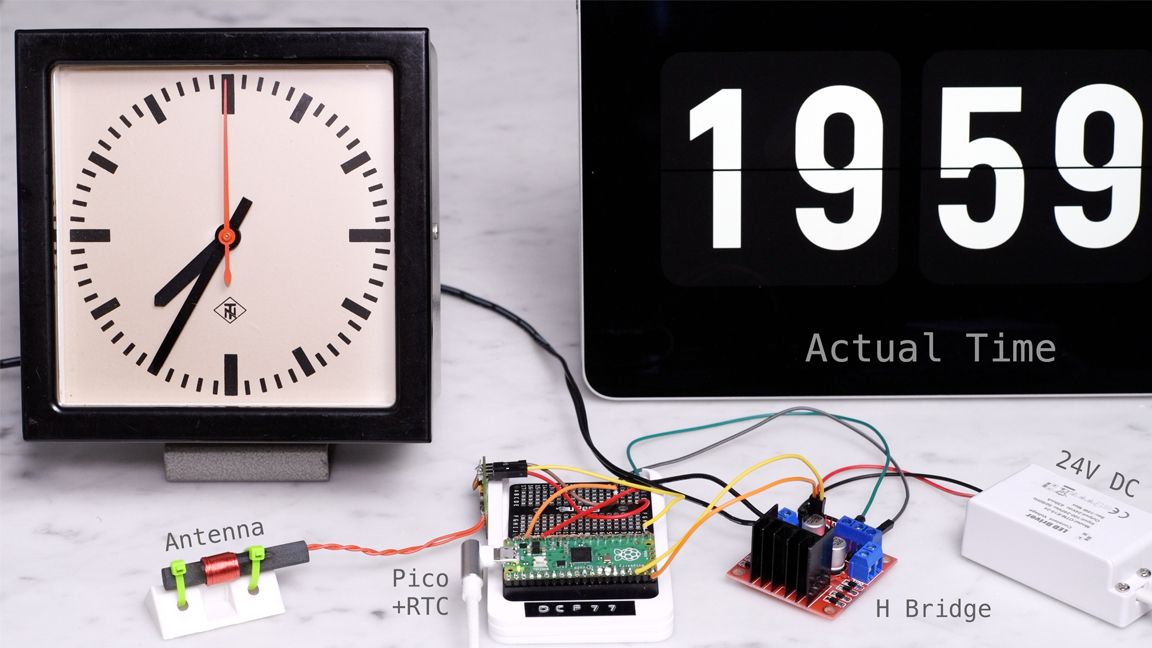
When it comes to bringing life back into old hardware, the Raspberry Pi is an excellent candidate for restoring function with a modern twist. Today we’re sharing an awesome Pico atomic clock project that demonstrates just that. Created by VEEB Projects, the projects restores the original functionality of an old railway station clock using a Raspberry Pi Pico that verifies that current time using a radio antenna.
VEEB Projects is no stranger to Pi projects—this Switzerland-based developer regularly shares micro-electronic projects. One of the most recent examples being the Heat-o-matic. This is another Pico-powered project designed to automate heat control using a temperature sensor and a relay. In the demo video, they used the setup to successfully cook a couple of burgers.
According to VEEB Projects, the idea for this project was to not only restore the old clock to a functional state but also to ensure it required no internet access to operate. This led to the development of a radio-based check system that verifies the time using the DCF77 signal, a European broadcast ongoing since 1973 that transmits the current time as determined by atomic clocks.
The Raspberry Pi Pico is connected to a ferrite receiver which is used to pick up radio signals, including the DCF77 signal used in this project. An RTC (Real Time Clock) module is used to make sure the time is kept in between signal checks. To control the clock’s arm mechanism, they’ve added an L298 H-Bridge motor controller into the mix.
The DCF77 signal broadcasts the time using a stream of data that the Pico is capable of interpreting. Once the signal has been interpreted, the Pico uses the data to set the time on the clock by using the L298 H-bridge to move the arms on the clock.
If you want to recreate this project, you’re in luck. VEEB Projects has shared everything you need to get started including a build tutorial, demo video, and complete source code. Check out the official project page over at GitHub.
To see this Raspberry Pi project in action, check out the demo video shared to YouTube by VEEB Projects and be sure to follow them for more cool creations.
Stay On the Cutting Edge: Get the Tom's Hardware Newsletter
Get Tom's Hardware's best news and in-depth reviews, straight to your inbox.

Ash Hill is a contributing writer for Tom's Hardware with a wealth of experience in the hobby electronics, 3D printing and PCs. She manages the Pi projects of the month and much of our daily Raspberry Pi reporting while also finding the best coupons and deals on all tech.
-
kanewolf I understand that this is a "because it is there" type project, but it seems like a lot of trouble compared to a GPS hat.Reply -
seamusdemora This is an inaccurate or misleading report. DCF77 is only available in Europe - nowhere else. The GitHub page links to a vendor that sells ONLY a DCF77 receiver, even though they also falsely claim to support WWVB (the US system). Disappointing... Tom's Hardware now joins the ranks of sketchy journalism and misinformation. Congratulations.Reply
Most Popular
